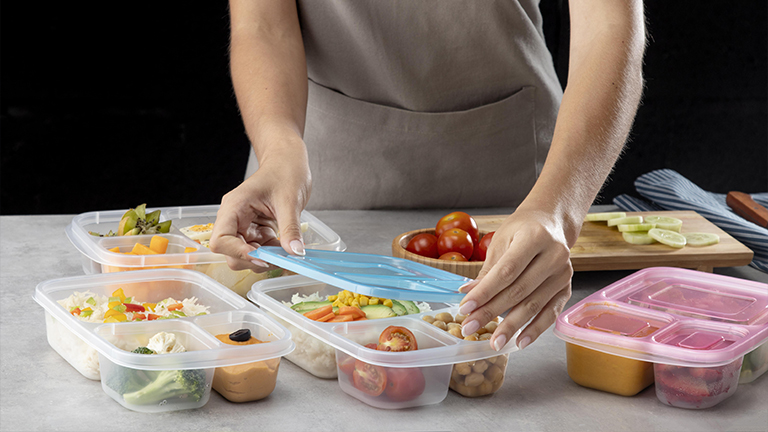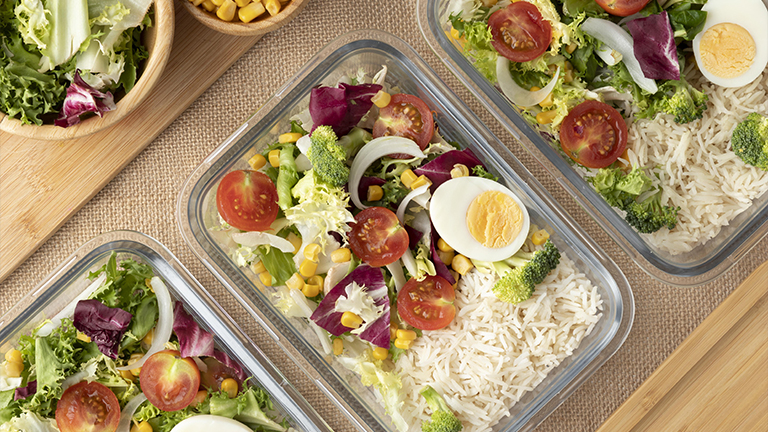Meal prepping has become an essential strategy for busy people looking to maintain a healthy diet, save time, and manage their lifestyle more efficiently. Whether you’re a beginner or someone looking to optimize your routine, meal prepping can transform the way you eat, plan, and approach food. This comprehensive guide will explore everything from meal prep basics to tips, recipes, and planning strategies.
What is Meal Prepping and Why It Works
Meal prepping involves planning, preparing, and storing meals ahead of time, usually for a week. It can include cooking in bulk, portioning meals into containers, and organizing ingredients for easy access.
Why it works:
- Saves time: Prepping in advance reduces daily cooking hours.
- Promotes healthier eating: Pre-planned meals make it easier to avoid fast food and unhealthy snacks.
- Supports fitness and weight goals: You can control portions and macro nutrients.
- Reduces stress: Knowing your meals are ready can streamline your busy schedule.
Meal prepping isn’t just for athletes or diet enthusiasts—it’s for anyone who wants a practical approach to eating well.
Benefits of Meal Prepping for Health and Lifestyle
Meal prepping offers numerous advantages for health and daily life:
- Improved nutrition: Prepping ensures your meals are balanced with proteins, carbs, and healthy fats.
- Weight management: Pre-portioned meals help prevent overeating.
- Consistency: Helps you stick to diet plans, whether for weight loss or muscle gain.
- Budget savings: Buying in bulk and planning meals reduces food waste and saves money.
- Convenience for busy lifestyles: Especially helpful for professionals, parents, and students.
By making meal prepping a habit, you’ll notice improvements in energy levels, overall wellness, and productivity.
Essential Tools and Containers for Meal Prep
To start meal prepping effectively, investing in the right tools can make a big difference:
- Meal prep containers: BPA-free plastic or glass containers with compartments.
- Mason jars: Great for salads, overnight oats, or smoothies.
- Slow cooker or Instant Pot: Ideal for batch cooking soups, stews, and grains.
- Meal prep labels: Helps track meal dates and ingredients.
- Measuring cups and spoons: Ensures accurate portion control.
Having these tools ready makes the process faster, organized, and more sustainable.
Step-by-Step Guide to Starting Meal Prepping
Here’s a beginner-friendly guide to start meal prepping:
- Plan your meals: Decide what you’ll eat for the week, including breakfast, lunch, dinner, and snacks.
- Create a shopping list: Buy all ingredients in bulk to save money and reduce trips to the store.
- Prep ingredients: Wash, chop, and marinate vegetables and proteins.
- Cook in batches: Cook grains, proteins, and vegetables simultaneously.
- Portion meals: Use containers to divide meals for each day.
- Store properly: Refrigerate meals for up to 4 days or freeze for longer storage.
Following these steps simplifies the process and ensures consistency.
Meal Prep Ideas for Breakfast, Lunch, and Dinner
Here are some easy and healthy meal prep ideas:
- Breakfast: Overnight oats, egg muffins, smoothie packs.
- Lunch: Quinoa salad bowls, grilled chicken wraps, veggie stir-fry.
- Dinner: Baked salmon with roasted vegetables, turkey chili, sheet-pan meals.
- Snacks: Greek yogurt with berries, protein balls, mixed nuts.
These options can be customized to suit your taste and dietary needs.
Budget-Friendly Meal Prep Tips
Meal prepping doesn’t have to be expensive. Here’s how to save money:
- Buy seasonal vegetables and fruits.
- Opt for frozen vegetables—they’re nutritious and last longer.
- Use beans, lentils, and eggs as affordable protein sources.
- Plan meals around weekly grocery sales.
- Reduce food waste by using leftovers creatively.
Budget-conscious meal prepping makes it accessible for anyone, regardless of income.
Meal Prepping for Weight Loss and Fitness Goals
Meal prepping is highly effective for weight management:
- Control portions and calories easily.
- Track protein intake for muscle growth.
- Plan high-protein meals for satiety and energy.
- Reduce temptation to snack on unhealthy foods.
Fitness enthusiasts can customize meal prep to include macro-balanced meals tailored to their specific goals.
How to Store and Reheat Meal Prep Safely
Proper storage ensures meals remain fresh and safe:
- Refrigeration: Store meals in airtight containers for up to 4 days.
- Freezing: Freeze meals for up to 3 months for long-term storage.
- Reheating: Use a microwave or oven; avoid reheating multiple times.
- Labeling: Always mark the date and meal type.
Following these tips prevents foodborne illness and preserves flavor and nutrition.
Common Mistakes to Avoid in Meal Prepping
Avoid these common pitfalls:
- Preparing meals without a plan.
- Not using airtight containers.
- Overcooking or under-seasoning food.
- Forgetting to track portions.
- Prepping foods that don’t store well, like salads with dressing.
Being mindful of these mistakes will make meal prepping more efficient and enjoyable.
Weekly Meal Prep Plan and Shopping List Example
Example Plan:
- Monday to Wednesday: Chicken quinoa bowls with roasted veggies.
- Thursday to Friday: Turkey chili with brown rice.
- Breakfast: Overnight oats or egg muffins for the whole week.
- Snacks: Protein balls or Greek yogurt with fruit.
Shopping List:
- Chicken breast, turkey, eggs, Greek yogurt
- Quinoa, brown rice, oats
- Spinach, broccoli, bell peppers, carrots
- Olive oil, spices, protein powder
- Nuts, berries, bananas
This framework provides structure and flexibility to suit your personal taste and schedule.
Conclusion
Meal prepping is a powerful tool for anyone looking to save time, eat healthier, and stay organized. By planning ahead, using the right tools, and following simple strategies, you can transform your eating habits while supporting your fitness, health, and lifestyle goals. Whether you’re in the USA, UK, or Canada, these meal prep tips, recipes, and plans can help you achieve consistent results and enjoy the benefits of organized, nutritious meals every week.


